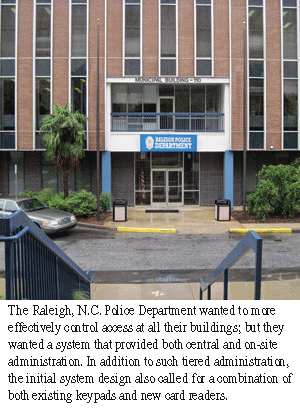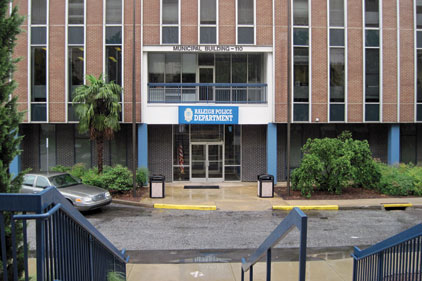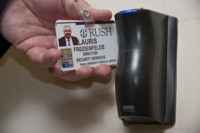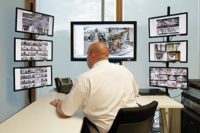Whether it’s a church door, an entrance into a high-tech Internet company or admission to a local police station, enterprise security leaders often view the application of access control technology one door at a time. Each has its purposes, authorized people who use it and changing needs based on location and time, for example.
Any opening in a building represents both a security concern and an opportunity. Initially, you to think about how to hang (hinges), secure (locks) and control (door closer) every door. The opportunity is that we can use today’s very powerful security technology to control, monitor and report on who can go where and when in a facility or across an enterprise, advises Scott Higinbotham of Stanley Security Solutions.
closer) every door. The opportunity is that we can use today’s very powerful security technology to control, monitor and report on who can go where and when in a facility or across an enterprise, advises Scott Higinbotham of Stanley Security Solutions.
He advises that the choice of door hardware is just as an important consideration as choosing the door composition and type.
Door hinges – often forgotten – come in various grades and functions. Usually installed in sets of three, door hinges provide all of the strength available to secure one side of the door. Moreover, a door hinge offers a very practical, secure, and aesthetically-pleasing power transfer device for an electro-mechanical cylindrical, mortise, or exit locking system.
Diverse Elements of Door Controls
Locking hardware provides the strength on the strike side of the door, and its quality should be matched to the material composition and safety/fire requirements for the door. Nearly every mechanical locking solution has an electrified version. Electrified cylindrical, mortise and exit devices are good choices where matching the look of existing non-electrified hardware is important. Also, many manufacturers of these devices provide integrated options that include lock control, door position, request-to-exit, latch monitor and card reader all contained in one aesthetically-pleasing unit. Having all of this functionality in the lock can reduce installation time while reducing the tamper risk for any of the monitoring components, says Higinbotham.
Electrified strikes and magnetic locks are other options to consider. These hardware types do not require a power or signal transfer device, however monitoring component integration is usually limited to door position and latch monitor. Also, the installation of these devices is an add-on to the look of a door and can affect the aesthetics of the opening.
Speaking of location, Indianapolis-based Heartland Church “is at a major intersection of Interstate 69,” explains Pastor Darryn Scheske. “The intersection has the second highest traffic count in the state so security was a key concern.” The church needed to secure the auditorium during the week to protect its substantial investment in musical equipment and other technology. The solution from Schlage lets users access, monitor and manage their system from any computer running a standard Web browser. The system’s plug-and-play design makes configuration easy and the embedded application eliminates the need for special software or a dedicated PC.
Easy But Secure Door Entry
Eight doors throughout the church property now use the access control solution. Authorized users enter via proximity cards that they place in front of proximity card readers.
“We can have as many proximity cards as we need to be used by staff and volunteers,” says Scheske. “They’re so easy to use to gain entry. All our people need to do is to hold their wallets or purses up to the reader.” The exterior door to the church auditorium and daycare center was hardwired to the access controller because this door would get the highest use. Plus, this door also needed to have an exit device and handicap accessibility.
For the other seven interior doors, wireless access control is the best solution. To ensure all the doors were controlled and latched properly, each access controlled opening was fitted with door closers.
Ease of use is another aspect of technology at the door.
Scheske concurs. “We had already figured how to use the system without training. It is very intuitive. We already have orders in for additional doors in both the church and the daycare center. Our lobby is quite large and we didn’t want to take the chance that the wrong person could sneak past our receptionist. That’s why, seven years ago, we installed biometric hand readers next to the double glass door entrance. Teachers, church staff and parents all use them.”




